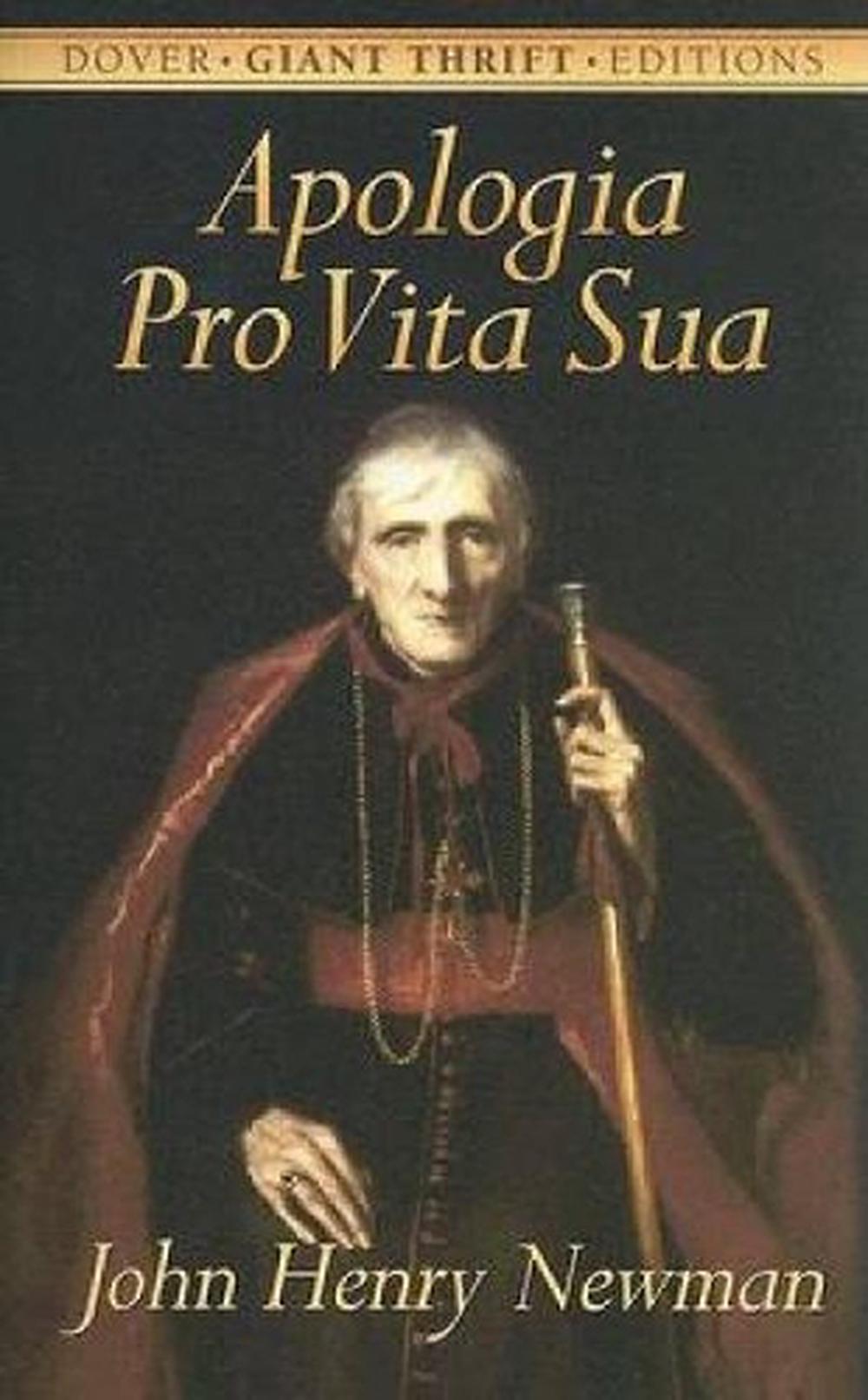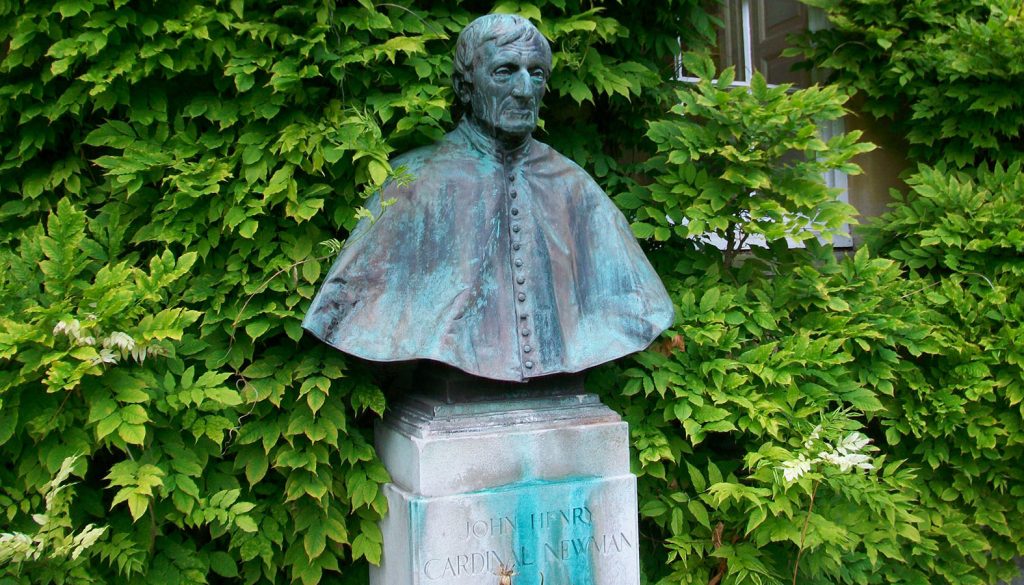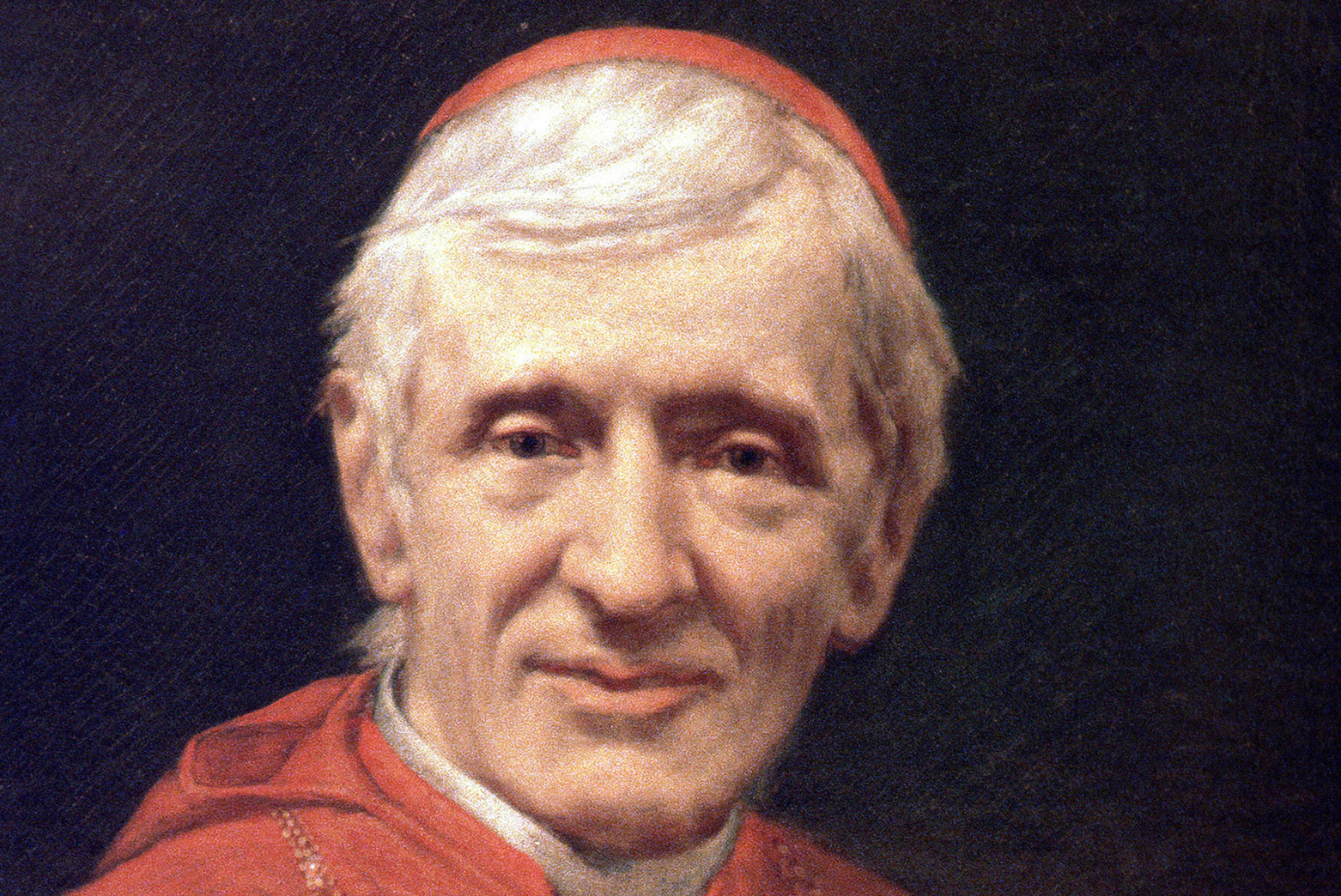The Goodreads Catholic Thought book club read John Henry Newman’s confessional memoir of his conversion to Catholicism, Apologia Pro Vita Sua. I will provide my thoughts, comments, and replies from that discussion in a series of posts. In time, Newman not only converted but became a Catholic priest and subsequently promoted to Bishop and Cardinal. As I will explain, a few years ago Newman was canonized to sainthood, so his full title I believe would be St. Cardinal John Henry Newman.
As I was trying to put together a reading schedule, as well as searching for free online copies of the book, I realized there are two different versions of the book. I came across the fact that there were two editions published, the original in 1864 and Newman’s revised in 1865. The two seem to be structured differently. The 1865 version has five chapters and an extensive collection of notes and supplemental material. It was revised and edited out some of the material from the original. But later publishing of the 1865 revised edition provided extensive notes and supplemental material that was edited out. But it also included an extra chapter that the 1864 version did not contain.
Here
are the 1865 five chapter titles:
Preface
xiv.
1. History of my Religious Opinions up to
1833
2. History of my Religious Opinions from
1833 to 1839
3. History of my Religious Opinions from
1839 to 1841
4. History of my Religious Opinions from
1841 to 1845
Section 1
Section 2
5. Position of my Mind since 1845
You can find the 1865 version online here.
Here
are the 1864 seven chapter titles:
Apologia pro Vita Sua
1. Mr. Kingsley's Method of Disputation
2. True Mode of meeting Mr. Kingsley
3. History of my Religious Opinions up to
1833
4. History of my Religious Opinions from
1833 to 1839
5. History of my Religious Opinions from
1839 to 1841
6. History of my Religious Opinions from 1841 to 1845
Section 1.
Section 2.
7. General Answer to Mr. Kingsley
You can find the 1864 version online here.
What you can see from a comparison between the tables of contents is that chapters three through six of the 1864 version are the same as chapters one through four of the 1865 version. Chapters one, two, and seven are omitted from the 1865 version but most publications today include those chapters as supplemental material. My Dover edition seems to.
So I think whichever edition you have you can probably find all the material except those that have the 1864 edition will not have chapter five of the 1865 edition. That’s because I believe chapter five was written after the 1864 publication.
Now what should we read? I propose we make our lives easier and just read the five chapters of the 1865 edition. If you have bought the 1864 edition and it does not include that fifth chapter—I suspect it might in the Appendixes—then you can read that chapter online at the link I provided.
So, first check to see which edition you have. My guess it’s the 1865 edition. I think that’s the most widely published. Second, is my plan acceptable?
###
As
I was reading the first chapter, I realized how important Newman’s biography
would be to understanding this work.
After all it’s his conversion story, of a man who converted at mid-way
in his life and wrote the conversion story almost twenty years later. I also remembered I had Bishop Robert
Barron’s film biographies of those he considered “Pivotal Players” of
Catholicism, and yes, John Henry Newman had his own hour and a half
documentary. I just finished watching
it, and that too was very helpful in putting Newman’s work into context. I wish I could share that DVD with all of us
reading. If by chance you had bought
Bishop Barron’s Pivotal Players series, and like me forgot Newman was included,
I suggest you dig it out and watch it prior to or as you read Apologia Pro Vita Sua. I did a search on YouTube and unfortunately
Word on Fire ministries did not make it free access. But you can watch this interview with Bishop
Barron where he discusses many of the same themes in the Newman DVD.
However, I did construct a timeline of Newman’s life, and I think this will be very helpful. Let me share that with you here.
1801 Birth (February 2).
1808 Enters school at Ealing.
1816 Religious Conversion to Evangelical Protestantism.
1822 At Oriel College, Oxford.
1825 Ordained Anglican Clergyman.
1828-43 Parish Vicar, St. Mary the Virgin.
1832-33 Trip to the Mediterranean.
1833 Start of Oxford Movement (Catholic Revival, High Anglicanism).
1845 Received into the Roman Catholic Church.
1847 Ordained Roman Catholic Priest.
1848 Founded English Oratory of St. Phillip Neri.
1854-58 Founder and Rector of Catholic University of Ireland.
1859 Opened Oratory School in Birmingham, England.
1864 Publishes Apologia Pro Vita Sua.
1879 Ordained Cardinal.
1889 Last Mass Celebrated, Christmas Day.
1890 Dies (August 11).
2019 Canonized Saint (October 13)
Feast Day: October 9th.
Now when you come across a year in your reading, and you can see Newman arranges the chapters by a particular year, you can figure out how old Newman is at the time by just subtracting one off the year because he was born in 1801. For instance, he was received into the Catholic Church in 1845, making him 44 years old at the time. He wrote Apologia Pro Vita Sua in 1864 making him 63 years old at the time. I hope this will help your reading.
###
As
part of the introduction I should write about how the Apologia was inspired. It
seems that just before 1864 Newman had been wanting to write about his
conversion, and was scribbling notes in preparation but an occasion came upon
him that focused the memoirs. A certain
Charles Kingsley, a novelist, historian, and ardent anti-Catholic, in a review of a recently published History
of England written by James Anthony Froude, which strongly defended the
English Reformation, insulted the Catholic clergy by twisting words of Newman
prior to his conversion. Let me provide
this extensive quote from a Newman biography I just bought (discounted at five
bucks!) and just received in the mail.
In 1864, Newman broke his
long public silence to respond to false accusations and the ridicule of Roman
Catholic priests by Charles Kingsley, a novelist, Chaplain to the Queen, and
professor of Modern History at Cambridge.
In the January issue of Macmillan’s
Magazine, which Newman received in late December 1863, Kingsley accused
Newman of having stated as an Anglican that the Roman clergy did not consider
truthfulness a virtue. Kingsley wrote,
“Truth, for its own sake, had never been a virtue with the Roman clergy. Father Newman informs us that it need not,
and on the whole ought not to be…”
After an unsatisfactory
apology by Kingsley in the following issue of Macmillan’s Magazine, Newman began to write a pamphlet which
eventually evolved into his famous autobiography. For some time, Newman had been seeking an
opportunity to explain and defend his religious opinions and certain steps in
his life. In this attack, he had found
the occasion. He gathered old
correspondences from Anglican friends and worked with remarkable intensity to
relate the history of his religious beliefs.
From late April to early June, he worked an average of over fifteen
hours each day, writing in standing position at his desk at the library of the
Birmingham Oratory. The result was a
powerful autobiography that reflected Newman's passion for the truth and the
evolution of his religious beliefs.
Newman wrote his friend Richard Church about Kingsley’s accusation:
“Thus, publically challenged, I must speak—and, unless I speak strongly, men
won’t believe me in earnest.” He asked
his friend, a witness of Newman’s last years as an Anglican, to “correct any
fault of fact” in his statement. The Apologia Pro Vita Sua was read
throughout the country by people of every religious creed. It was a vindication of Newman’s intellectual
honesty and of the validity of the Catholic Creed. It remains today one of his most recognized and
often cited works, the content of which recounted in this biography.
-pages 548-9, Passion For Truth: The Life of John Henry Newman, Fr, Juan R, Vélez, Tan Books, Second Edition, 2019.
So what I think is the key takeaway from this is that the dispute was not over some deep theological issue but over a crass statement by what today might be called a bigot. Newman found the opportunity to expose Kingsley and defend the burgeoning Catholic Church in England that was beginning to grow. Without further quoting the book—that was all done by hand and not copy and paste—this was a critical moment in the Catholic Renaissance in England. Catholics thanked Newman, Protestants read the Apologia and started to if not accept Catholics at least drop some of their erroneous notions, and a number of prominent Englishmen converted to Catholicism. Without Newman’s Apologia we might never have had the conversions of Gerard Manly Hopkins, Robert Hugh Benson, and G.K. Chesterton. Newman’s autobiography was one of those rare books that had a lasting societal impact.
Kerstin
Commented:
I didn't realize that
this is the very Charles Kingsley who wrote The Water Babies and Westward Ho! or, the Voyages and Adventures of Sir Amyas Leigh, Knight,of Burrough, both of which I have yet to read.
When you look at the
picture of the man he looks like your typical set-in-his-ways 19th century man.
Not somebody I would want to cross ;-) Newman seems to have gotten the brunt of
it and defanged him. Yikes, what drama!
My
Reply:
It's hard to say what is
edgy or conventional in the appearance of people from the past. He's got those
ridiculous sideburns, but I don't know the year they came into popularity.
Without having a time context for style it's not so easy to tell. There was a
time in my lifetime when tattoos were a sign of an edgy person. Now it's
amazing how many people have them. So once they got popular, the edginess of
them went away. And so the new edginess is not to have just one but to cover
your entire body in a tattoos...lol. Kingsley also looks pretty stern in his
photos. But that was the common way of posing for pictures for the 19th and
well into the 20th century. I have a black and white picture of my grandfather
that must have been taken before the 1950s and he looks pretty stern. But he
was a very jovial and easygoing person. You can't really go by the picture.
Kerstin’s
Reply:
I know what you're
saying. Yet the disposition of a person gets etched into the face over time
when youthful features are waning. It is not a complete picture of a person, of
course. It is more of an intuitive reaction that's hard to put into words.




No comments:
Post a Comment